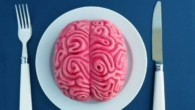
Symptoms that indicate disturbances in the work of the liver and bile
0
The doctor listed the symptoms that will help determine that everything is not right with the work of the liver and gall bladder.
If you have no appetite in the morning and you literally force yourself to eat breakfast, this is one of the signs that there is most likely stagnation in the gallbladder. Because of this, fatty food cannot be fully digested. As a result, you may feel nauseous after eating fatty foods.
“Another symptom associated with bile stagnation is itching of the skin. It can worsen at night, while the skin is free of rashes. This is due to stagnation of bile and accumulation of bilirubin in the skin,” says the expert.
Constipation or, on the contrary, diarrhea occurs very often when liver and gall bladder malfunctions occur. The fact is that with the normal functioning of the gastrointestinal tract, bile irritates the intestinal mucosa and “turns on” peristalsis. There is no bile – there is no normal motility.
Therefore, constipation is not always treated with laxatives, sometimes it is more effective to use choleretic drugs.
Pain in the right hypochondrium is one of the frequent signs that the liver needs increased attention. After all, it does not hurt by itself. A spasm of the bile ducts can cause unpleasant sensations. Sometimes pain occurs due to swelling or an inflammatory process in the intestine where bile comes out.
If you notice frequent mood changes, irritability for no reason, to be alarmed, this may also indicate that there are problems with bilious It would seem that what is the connection? The most direct.
“When detoxification processes in the liver are disturbed and bile flow is poor, waste products are retained in the blood and enter the brain, causing neuroinflammation and changing the balance of neurotransmitters.”
Moreover, due to the increase in the level of ammonia and homocysteine and their improper utilization (the liver does not cope), fog in the head and a feeling of fatigue may occur.









Leave a Reply